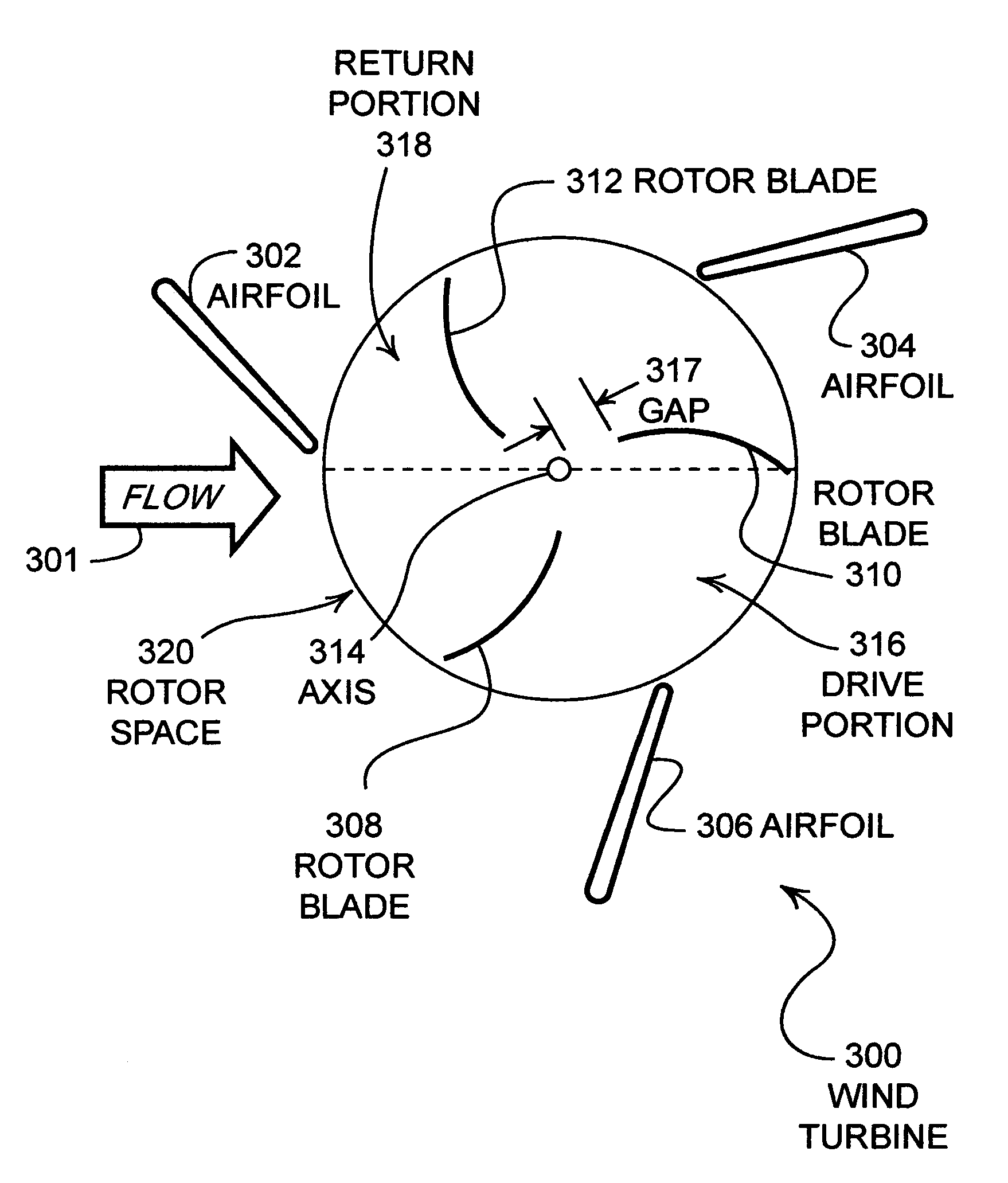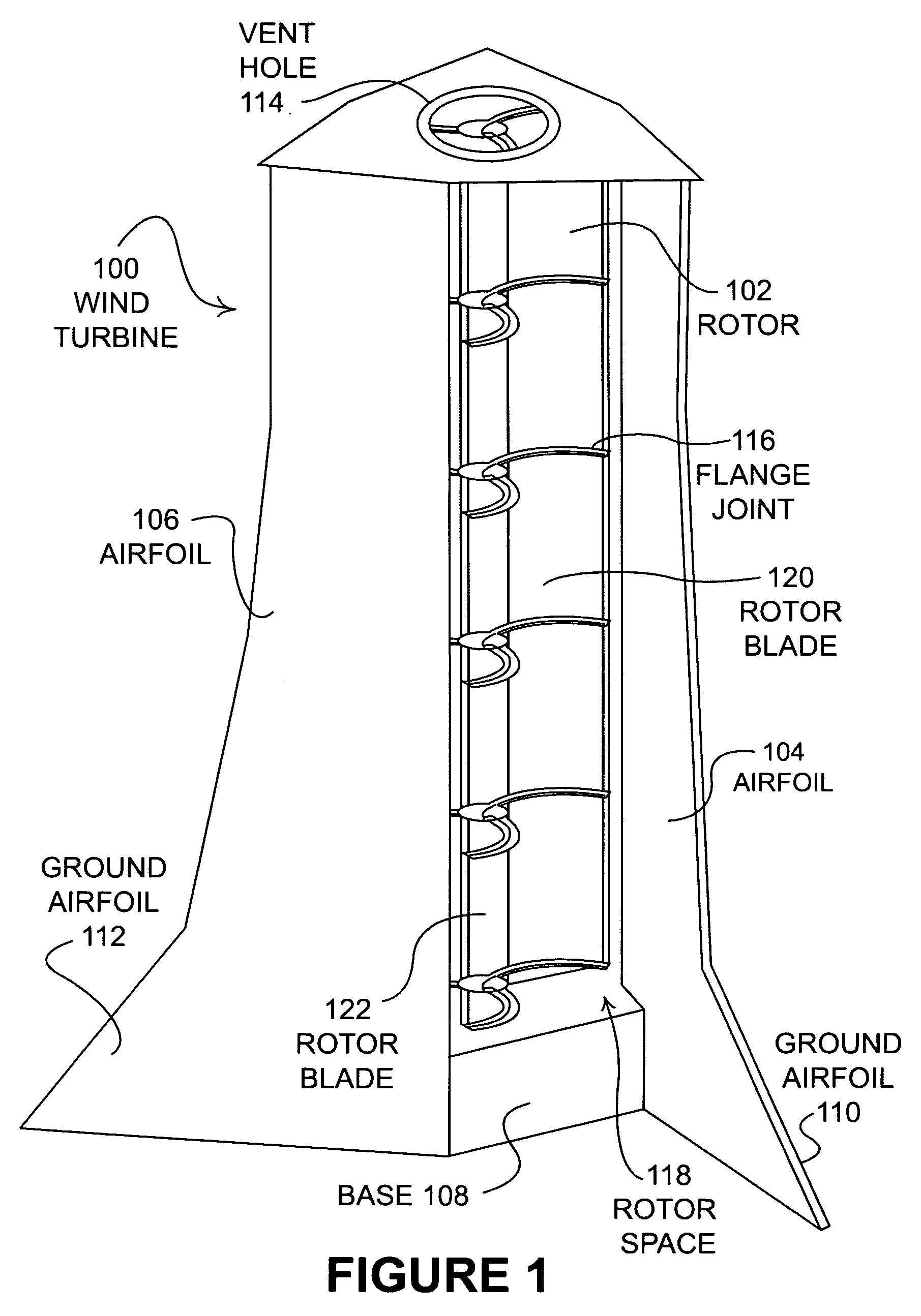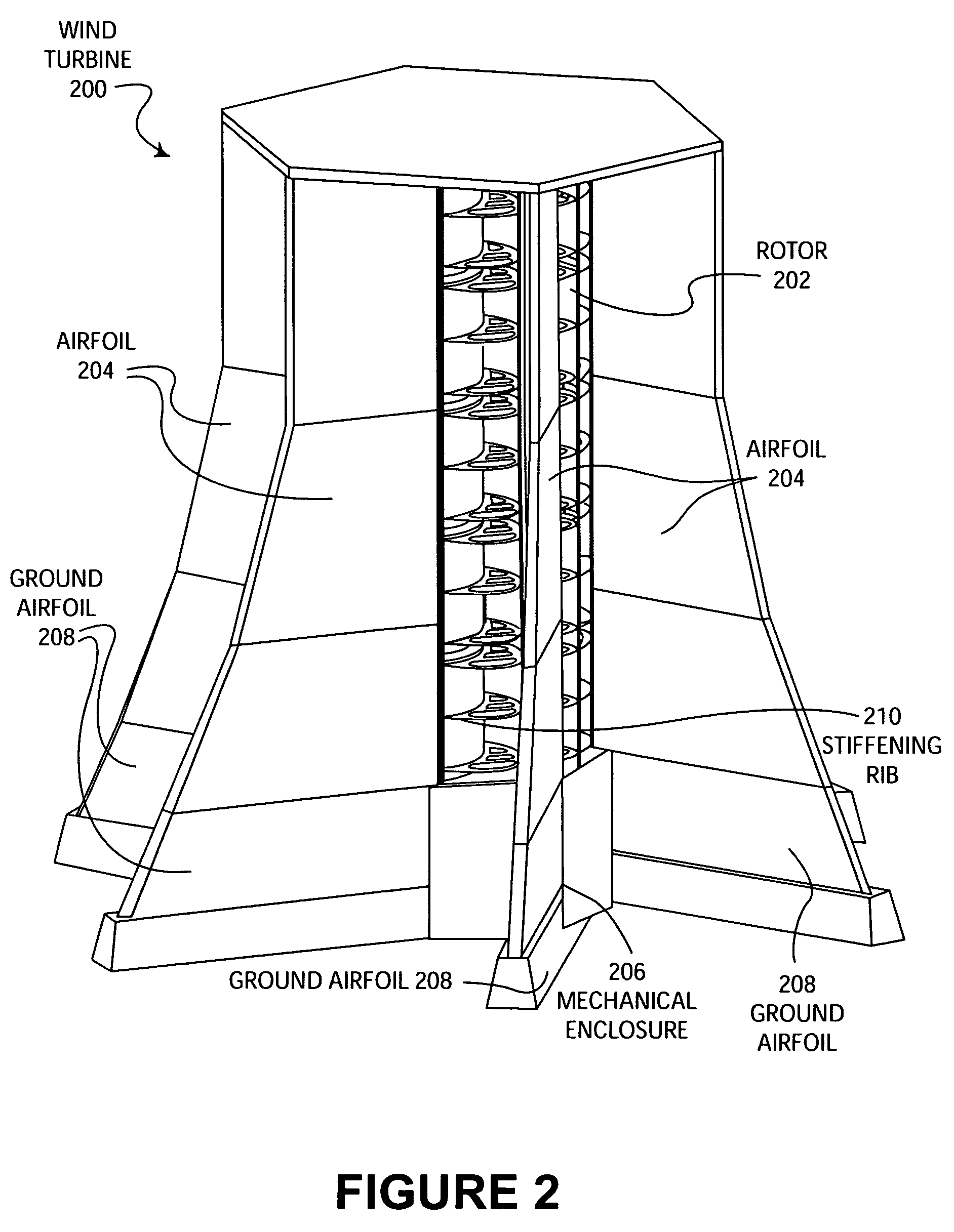Wind turbine having airfoils for blocking and directing wind and rotors with or without a central gap
a technology of wind turbines and airfoils, applied in the field of cross-flow wind turbines, can solve the problems of high initial cost and limited efficiency of machines, radial windmills cannot normally be operated in very high wind conditions, exposed blades are hazardous to certain wildlife, etc., and achieve the effect of safe and visually appealing
- Summary
- Abstract
- Description
- Claims
- Application Information
AI Technical Summary
Benefits of technology
Problems solved by technology
Method used
Image
Examples
first embodiment
[0026]FIG. 1 is a perspective view of a crossflow wind turbine 100. Crossflow wind turbines differ from propeller type (radial flow) turbines in that the wind generally flows across the axis of rotation in crossflow turbines, rather than generally along the axis of rotation in propeller type turbines. As shown in FIG. 1, a vertical rotor 102 is propelled by the wind and is mechanically coupled to an electrical generator located in the base 108. The rotor 102 is generally disposed with a vertical axis, but can have other orientations as desired. Three airfoils 104, 106, and one not visible behind the rotor 102, serve to support the upper portion of the rotor 102 and also to direct the wind into a drive portion of a rotor space 118 of the rotor 102 for increased efficiency and to block wind from a return portion of the rotor space 118. The rotor space 118 is the volume that is swept out by the rotor blades of rotor 102, such as rotor blades 120, 122, during the rotation of rotor 102. ...
embodiment 600
[0041]The asymmetrical design of the embodiment 600 may be beneficial in locations where the wind is predominately from one direction, which is often the case in locations of high wind. Such embodiments may have the benefit of lower costs, since fewer structural components may be needed to construct the wind turbine. Further, the asymmetric nature of the wind turbine may be optimized for increased performance in the direction of the prevailing wind.
[0042]FIG. 7 illustrates a cross-sectional view of another embodiment of a wind turbine 700. The incoming airflow is represented by arrow 701 from the left side of FIG. 7. Airfoils 702, 704, 706, and 708 are disposed symmetrically on two sides of the rotor space 720. Three rotor blades 710, 712, and 714 are similar in design to those of embodiment 600.
embodiment 700
[0043]Airfoils 702, 704, 706, 708 are disposed in a symmetric design that is capable of capturing wind from two opposing directions. Airfoils 702, 704, 706, 708 are arranged in a manner that provides optimized performance from wind flowing from direction 701 as well as wind flowing from the opposite direction 703. In many locations with high prevailing wind, the wind direction may often be from a primary direction 701. In such locations, the secondary direction is often opposite from the primary direction 701. The embodiment 700 may take advantage of such a phenomena by being oriented to perform at maximum efficiency in the two main wind directions. As shown in FIG. 7, airfoil 702 blocks wind flowing from direction 701 from entering the return portion 718 of the rotor space 720. Airfoil 706 assists in guiding wind flowing from direction 701 into the drive portion 716. Similarly, airfoil 708 blocks wind flowing from direction 703 from the drive portion 716, which becomes the return p...
PUM
 Login to View More
Login to View More Abstract
Description
Claims
Application Information
 Login to View More
Login to View More - R&D
- Intellectual Property
- Life Sciences
- Materials
- Tech Scout
- Unparalleled Data Quality
- Higher Quality Content
- 60% Fewer Hallucinations
Browse by: Latest US Patents, China's latest patents, Technical Efficacy Thesaurus, Application Domain, Technology Topic, Popular Technical Reports.
© 2025 PatSnap. All rights reserved.Legal|Privacy policy|Modern Slavery Act Transparency Statement|Sitemap|About US| Contact US: help@patsnap.com



